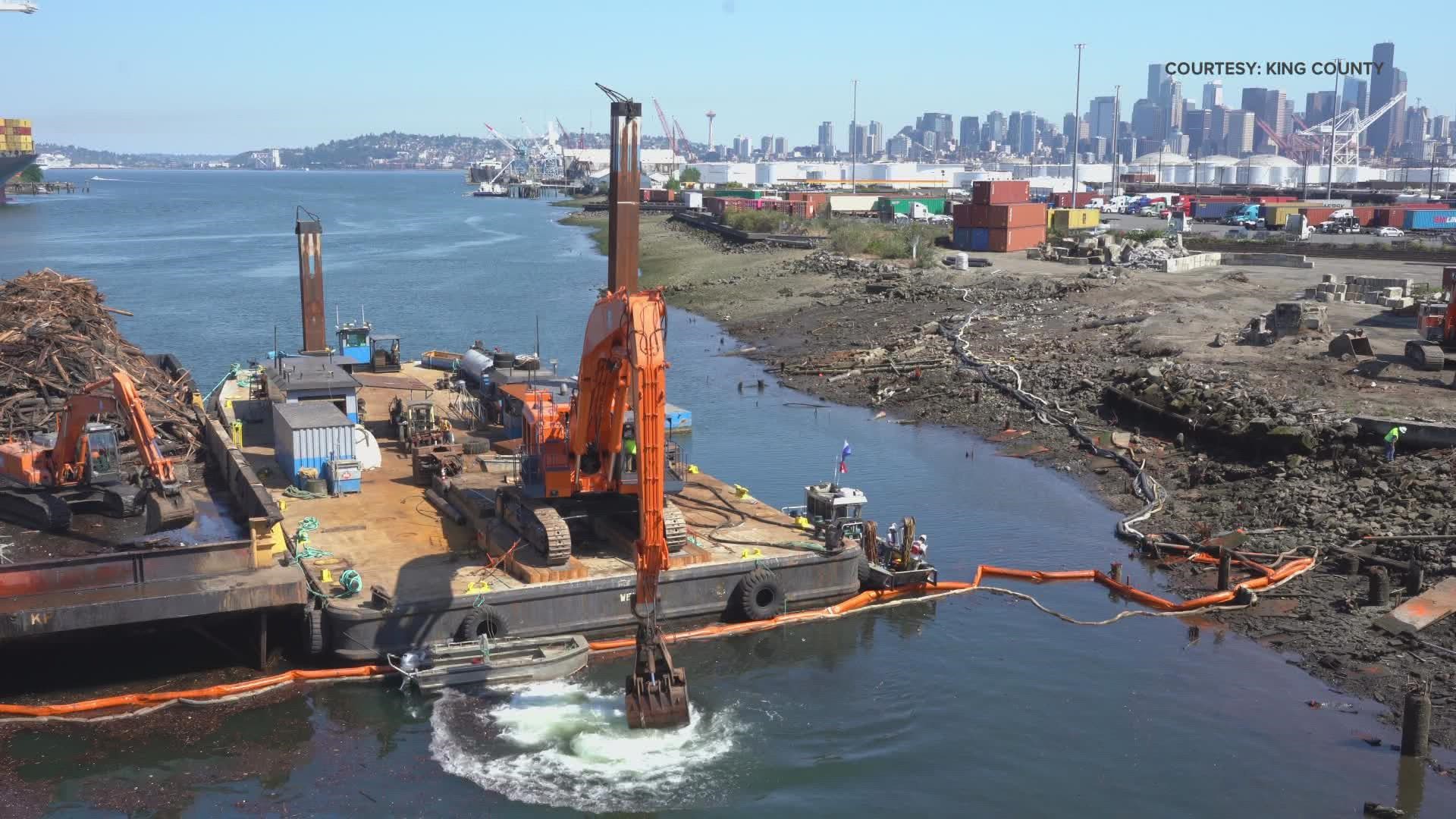SEATTLE — The King County Solid Waste Division has embarked on a major pollution removal and remediation project in the hopes of providing better conditions for salmon.
The project is on the lower Duwamish Waterway at the southwest corner of Harbor Island.
"This is part of a large effort to clean up the Duwamish, [which] is a very important part of the economy and the region here- but not at the cost of the environment," King County Solid Waste Division Director Pat McLaughlin said. "While we want to support the business and infrastructure that happens in and around Harbor Island, we also recognize it has to be done with environmentally-responsible approaches."
McLaughlin said the county purchased a site on Harbor Island years ago as a site for a potential waste export facility. The county is still determining how the site will be used, but recently discovered a dilapidating dock on the property consisting of creosote-soaked pilings was polluting the water -- in a place that's critical to many salmon.
"A site like this, it's really kind of a gateway to the whole Green River upstream from here," said Joshua Latterell, a river ecologist with King County Department of Natural Resources and Parks. "Every adult salmon that wants to spawn in the Green River has to swim past this point and the juvenile salmon, once they've hatched out of the gravel, have to move downstream past this location as well."
Latterell said studies have shown exposure to toxic chemicals such as creosote and arsenic can damage the DNA of salmon, in addition to causing lesions, liver damage or reproductive harm.
McLaughlin said the dock was built and left by previous owners of the property.
"We didn't design it, we didn't operate here, but we did recognize that there were environmental threats associated with the dilapidated creosote pilings in the water, many of which has fallen over and were just lying on the bottom of the Duwamish," McLaughlin said. "We saw an opportunity and a responsibility to clean up this mess even though we didn't really create it."
Crews recently lifted the pilings from the water, and are currently removing soil that may be contaminated and any other material that could prove problematic to wildlife in the area or people along the river.
"What it will look like for the marine life is a whole new world, it's gonna be beautiful- because all of the contaminated soil and the creosote which is not healthy for habitat will be removed," McLaughlin said.
This is just one in a number of restoration initiatives across the watershed, including a project along the Green River to improve salmon habitat and protect homes, farms and roads from flooding.
Latterell has worked for King County for fifteen years and said he's seen progress and momentum in a positive direction.
"We've been really successful at protecting and restoring hundreds of acres of floodplain forest upstream, we've been able to give the river more room to move by taking out levies that kept the river in place, and as that river moves it creates new habitat for fish and we're building on those efforts, piece by piece," Latterell said.
While salmon are often a focal point for discussion of restoration, the county says it's just one in of several goals directing restoration work.
"We think about three things," Latterell said. "How do we achieve environmental outcomes, how do we transfer benefits from healthy environments to people, and how do we make sure those benefits are being delivered to people equitably?"

